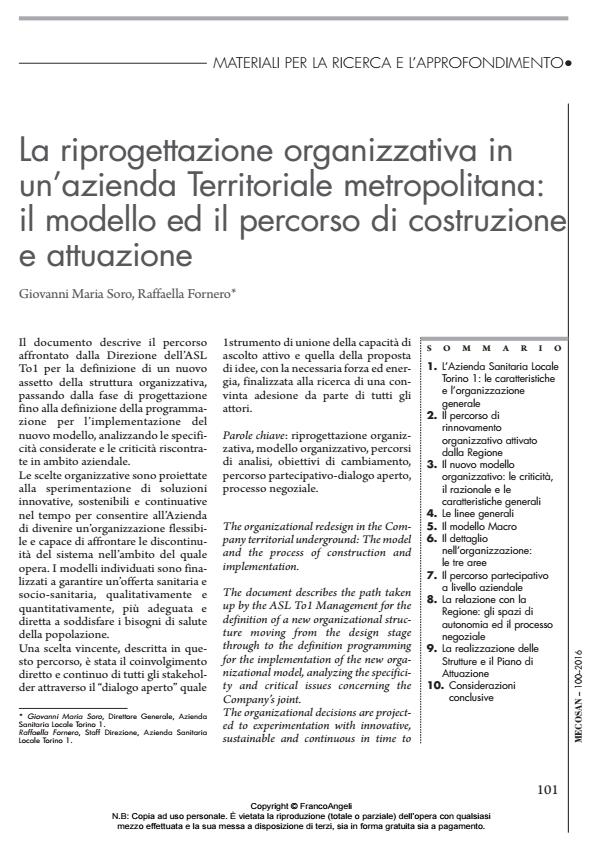The organizational redesign in the Company territorial underground: The model and the process of construction and implementation.
Journal title MECOSAN
Author/s Giovanni Maria Soro, Raffaella Fornero
Publishing Year 2017 Issue 2016/100
Language Italian Pages 21 P. 101-121 File size 23849 KB
DOI 10.3280/MESA2016-100006
DOI is like a bar code for intellectual property: to have more infomation
click here
Below, you can see the article first page
If you want to buy this article in PDF format, you can do it, following the instructions to buy download credits

FrancoAngeli is member of Publishers International Linking Association, Inc (PILA), a not-for-profit association which run the CrossRef service enabling links to and from online scholarly content.
The document describes the path taken up by the ASL To1 Management for the definition of a new organizational structure moving from the design stage through to the definition programming for the implementation of the new organizational model, analyzing the specificity and critical issues concerning the Company’s joint. The organizational decisions are projected to experimentation with innovative, sustainable and continuous in time to allow the Company to become a flexible organization capable of dealing the discontinuities of the system within which it operates. The identified operational models are aimed at ensuring an offer health and social care, qualitatively and quantitatively, more appropriate and directed to meet the health needs of the population. A winning choice described in this process was the direct involvement of all stakeholders through the "open dialogue" which merge tool of active listening skills and that the proposed ideas, with the necessary strength and energy, aimed at finding a steadfast commitment by all actors.
Keywords: Organizational redesign, organizational model, scan paths, change objectives, participatory process-open dialog, negotiation process.
Giovanni Maria Soro, Raffaella Fornero, La riprogettazione organizzativa in un’azienda Territoriale metropolitana: il modello ed il percorso di costruzione e attuazione in "MECOSAN" 100/2016, pp 101-121, DOI: 10.3280/MESA2016-100006